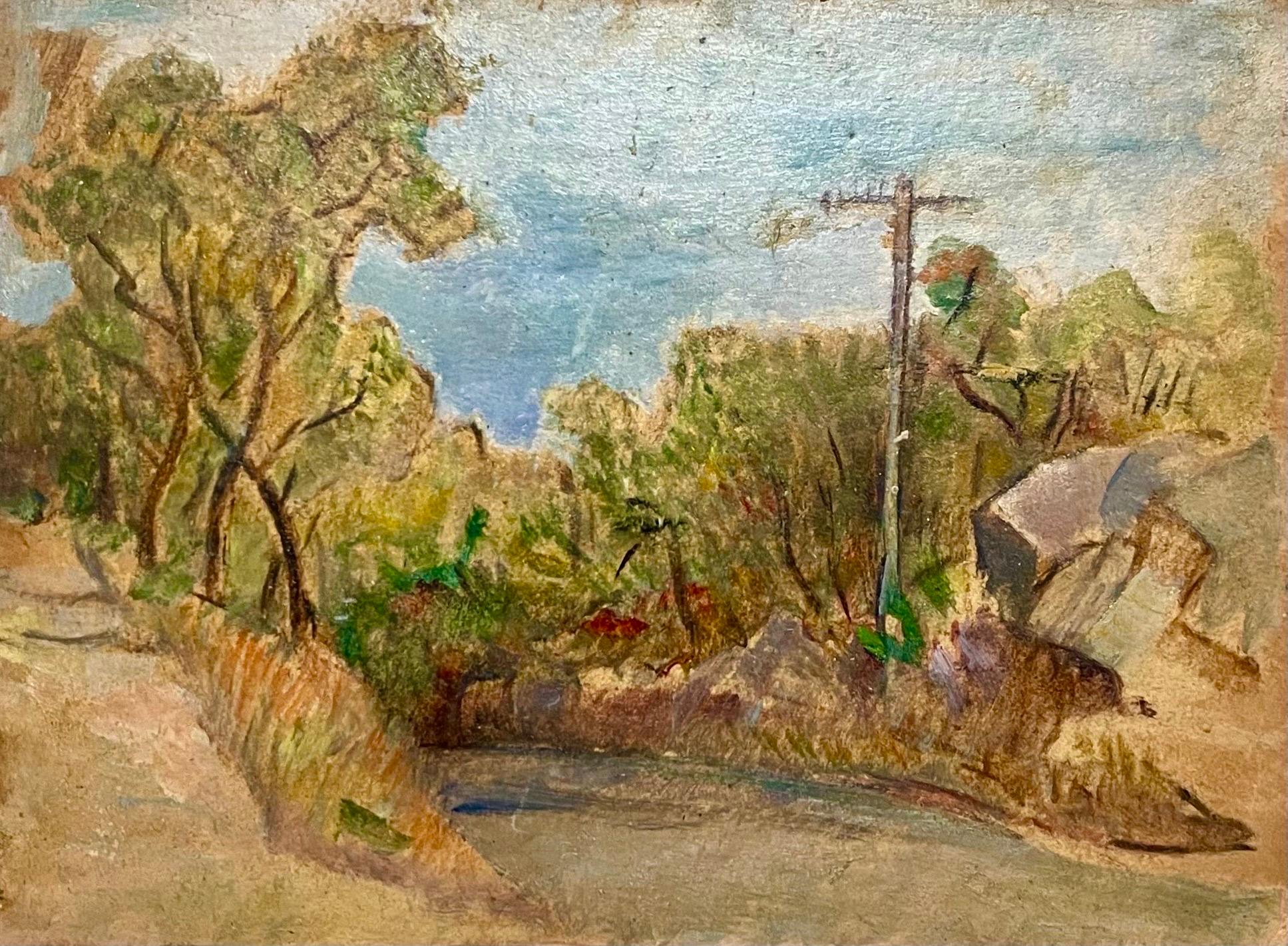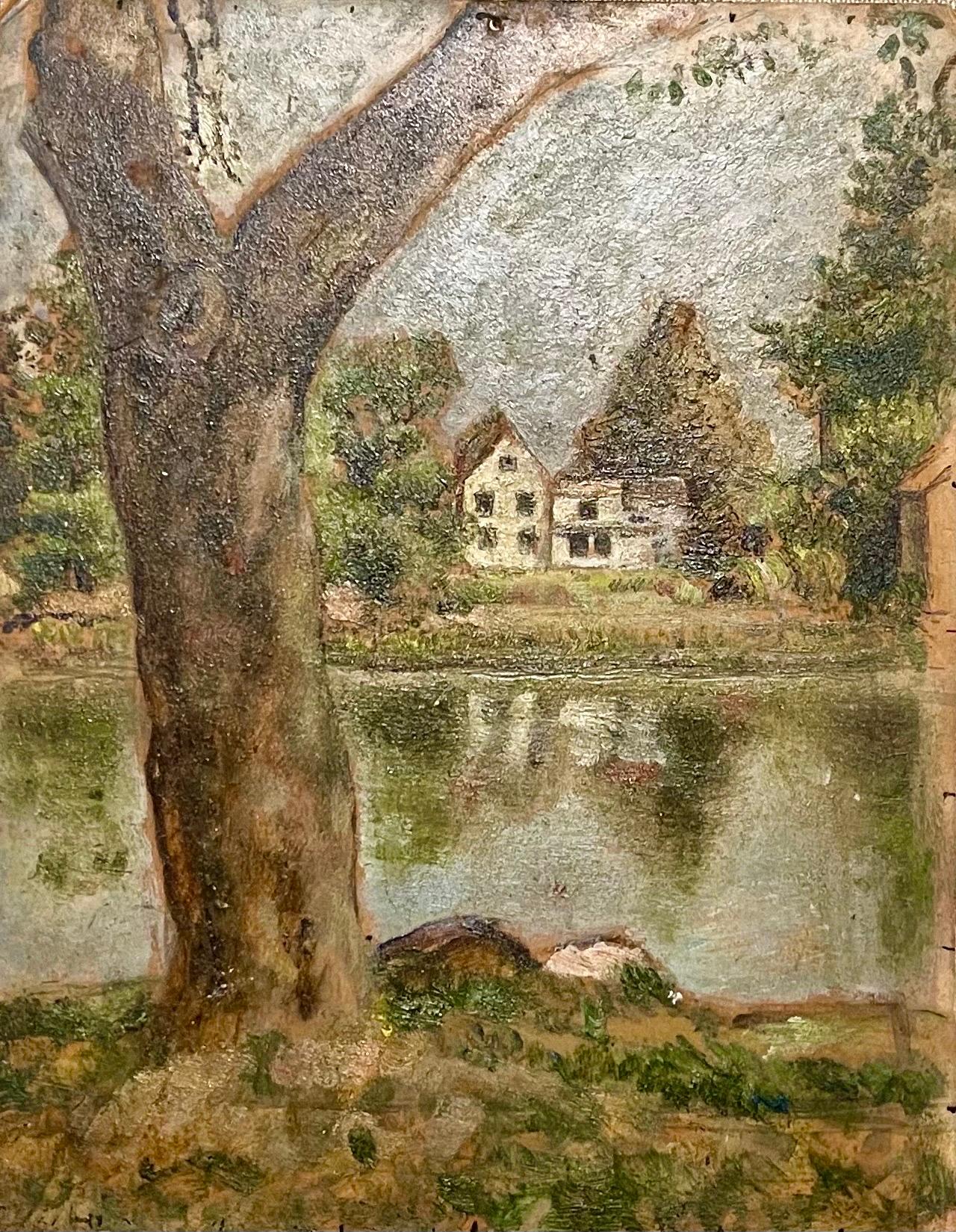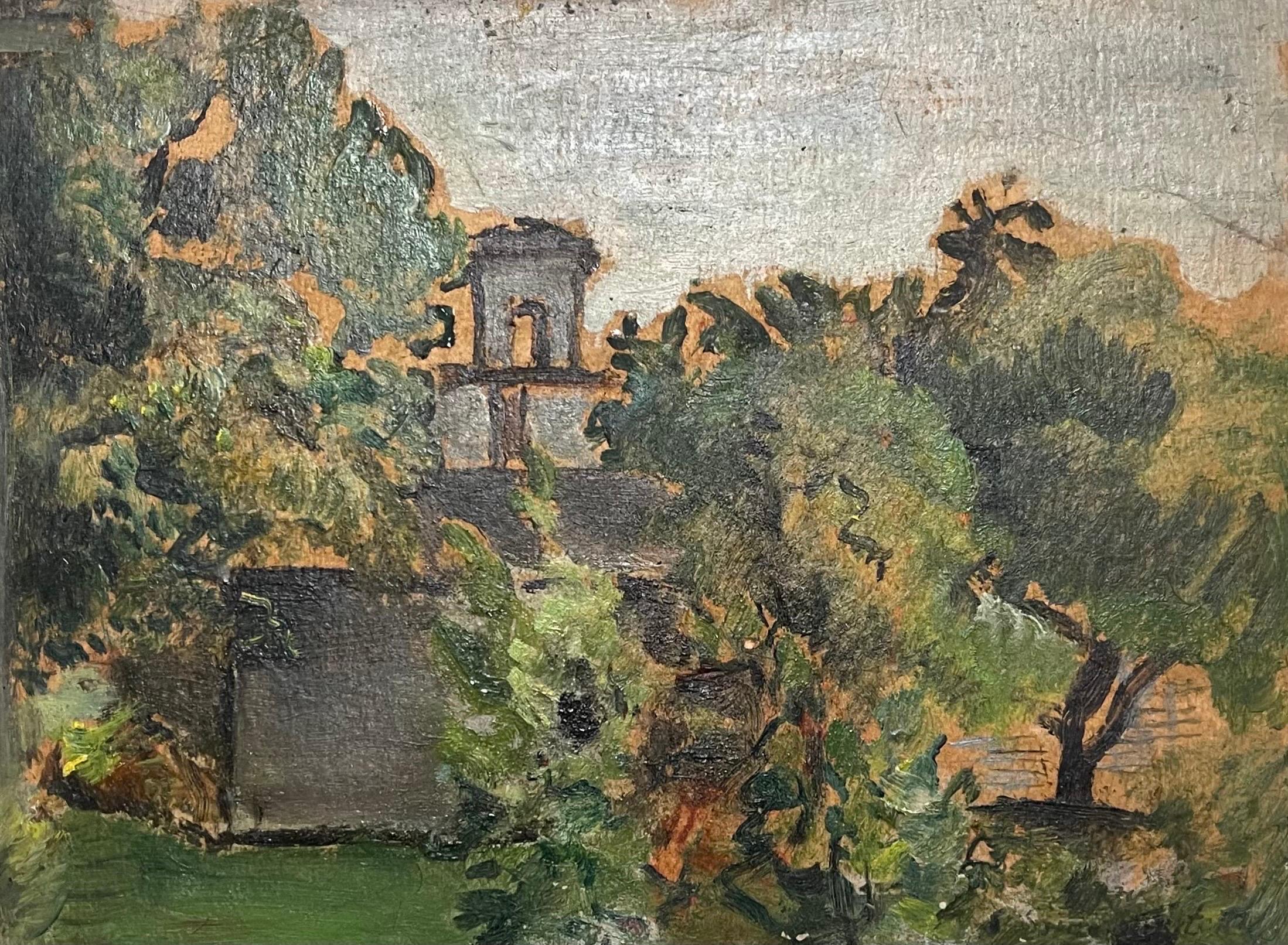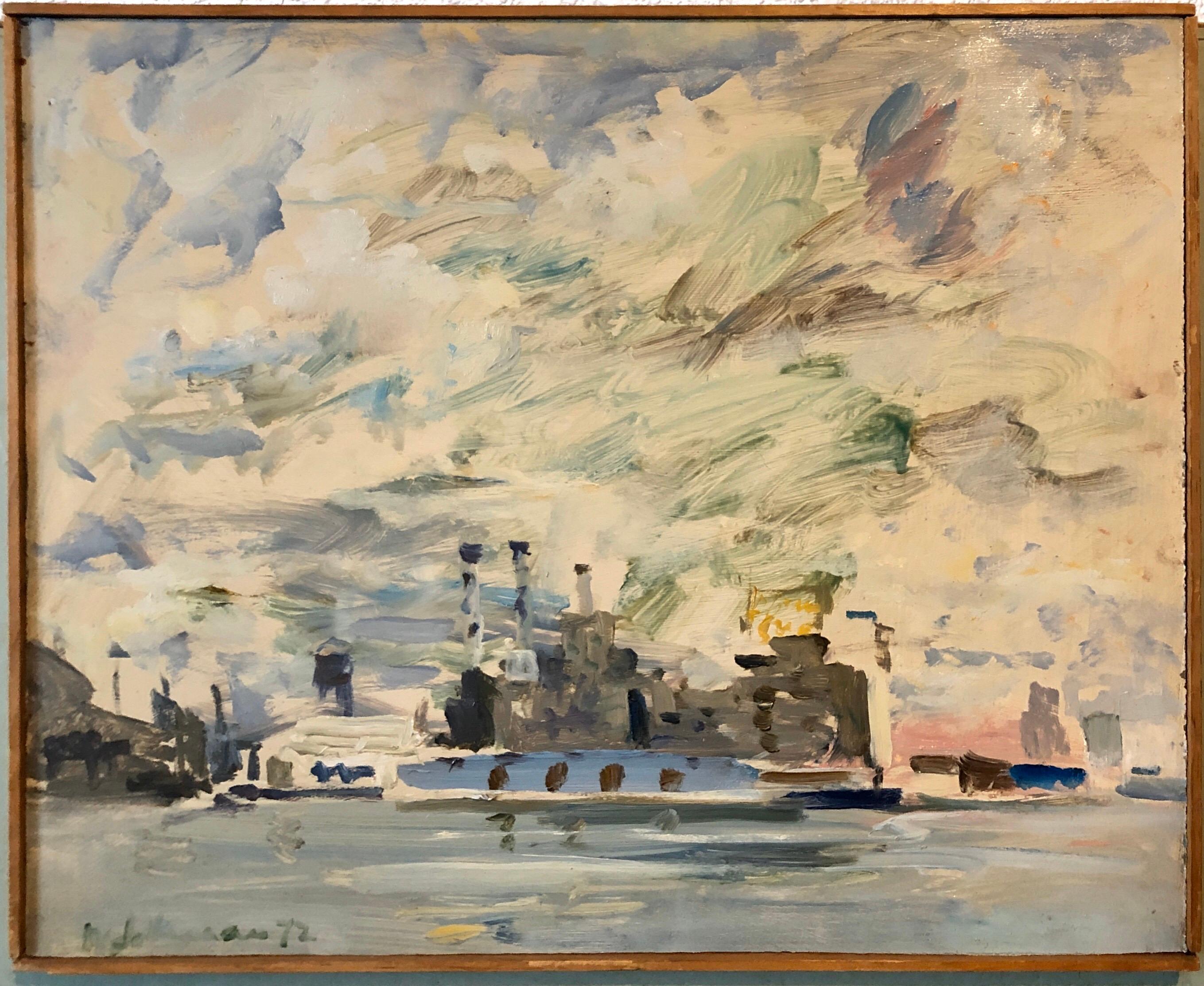Items Similar to Wedding Day - Norman Rockwell Americana - Female Illustrator
Want more images or videos?
Request additional images or videos from the seller
1 of 14
Lorraine FoxWedding Day - Norman Rockwell Americana - Female Illustrator1949
1949
About the Item
Recently, women artists have been soaring in price to millions of dollars. In many cases, many of these women were quite obscure. For example, recently acknowledged Gertrude Abercrombie, a naive surrealist artist, has recently seen her paintings rise to the area of $400K. Lorraine Fox, who is a consummate female artist/ illustrator whose work rivals any of the recently anointed female stars is still an unknown quantity. She has exhibited at the Brooklyn Museum and is in the collection of the Smithsonian Archives of American Art, and she is a member of the Famous Artists School in Westport, Connecticut along with Norman Rockwell, Today she is relatively unknown and completely off the radar of the so-called art establishment. Wedding Day is a wonderful example of her mid-century, somewhat naive style. The work is signed lower right and was exhibited at the Brandywine River Museum in the Fall 1985 show, America's Great Women Illustrators, Framed size 22.25 x 18.25
- Creator:Lorraine Fox (1922 - 1976, American)
- Creation Year:1949
- Dimensions:Height: 18.25 in (46.36 cm)Width: 14 in (35.56 cm)Depth: 2 in (5.08 cm)
- Medium:
- Movement & Style:
- Period:
- Condition:Scattered craquelure, some surface grime.
- Gallery Location:Miami, FL
- Reference Number:1stDibs: LU385312738872
Lorraine Fox
Lorraine Fox was an American illustrator and commercial artist who illustrated magazines, book covers and advertisements. She was born on May 22, 1922, in Brooklyn. She was a Hall of Fame member of the Society of Illustrators. Fox was a teacher at Parsons School of Design and at the Famous Artists School along with Norman Rockwell. Lorraine Fox died in 1976, in Mineola, New York.
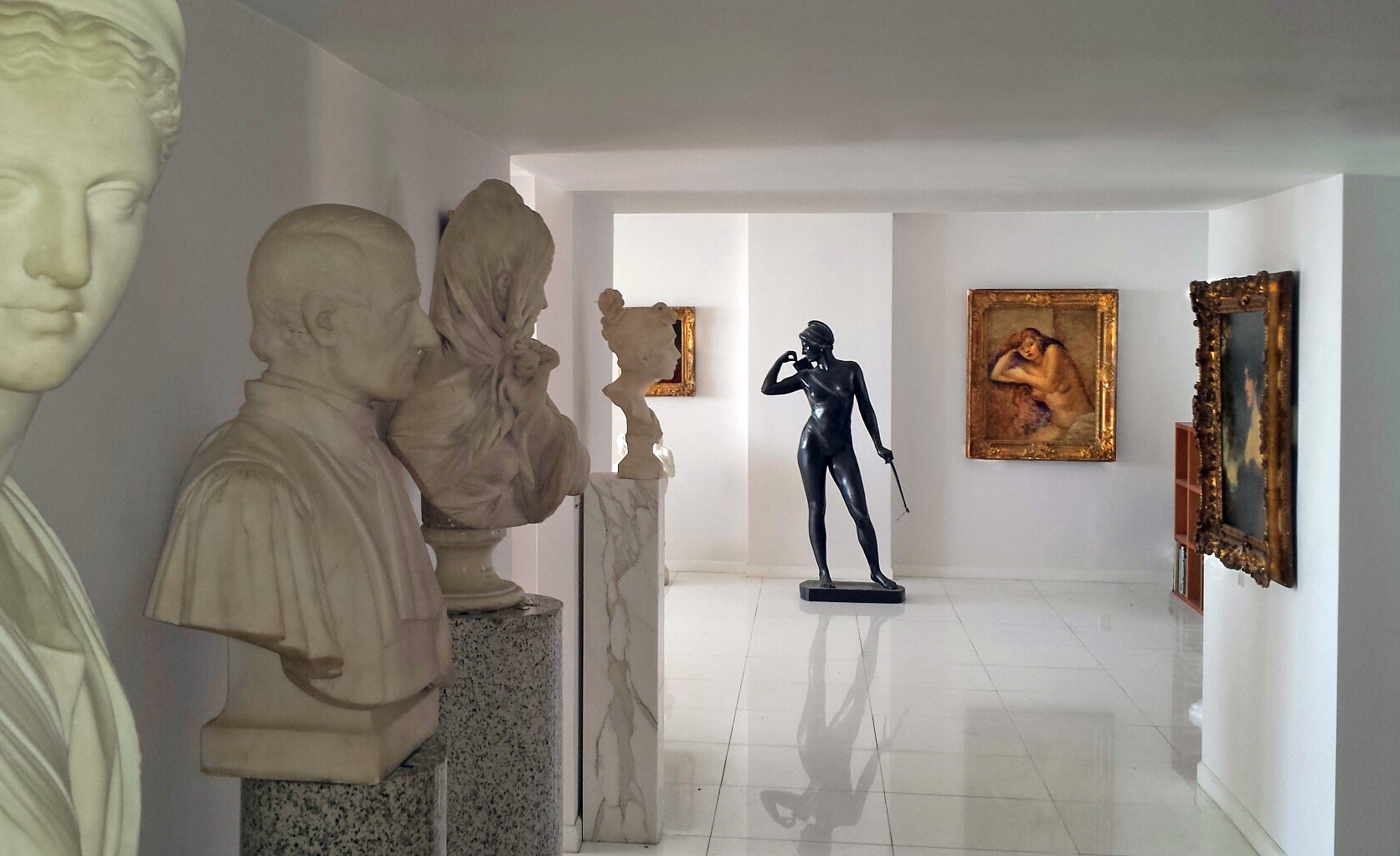
About the Seller
4.9
Gold Seller
These expertly vetted sellers are highly rated and consistently exceed customer expectations.
Established in 2005
1stDibs seller since 2016
102 sales on 1stDibs
Typical response time: 1 hour
- ShippingRetrieving quote...Ships From: Miami, FL
- Return PolicyA return for this item may be initiated within 3 days of delivery.
More From This SellerView All
- "The Glorious Flight - Across the Channel with Louis Bleriot" - Children's BookBy Alice and Martin ProvensenLocated in Miami, FLStudy for "The Glorious Flight - Across the Channel with Louis Bleriot"; 1983; Gouache on Illustration Board; 14.5" x 13.75"; Signed Lower Right; Unframed. From Wikipedia, the free encyclopedia Alice Rose[1] Provensen (née Twitchell; August 14, 1918[2] – April 23, 2018[3]) and Martin Provensen...Category
1980s American Modern Figurative Paintings
MaterialsBoard, Gouache
- Saturday Evening Post cover, August 29, 1959. - AmericanaBy John Ford ClymerLocated in Miami, FLThis work was painted in 1958 ( per the label from Illustration House. It was published in 1959. This is very common in the publishing world where a world of art is commissioned t...Category
1950s American Realist Landscape Paintings
MaterialsOil, Board
- The 11 Gauge Shotgun - Saturday Evening Post illustrationBy Amos SewellLocated in Miami, FLSaturday Evening Post interior illustration Signed lower rightCategory
1950s American Realist Figurative Paintings
MaterialsOil, Board
- Futurist Vision - Mid-Century New York Skyline - Industrial ProgressLocated in Miami, FLRarely do you come across a work of art that is vastly different than just about anything you see. This work is undeniably brilliant and a sheer pleasure to behold. Alexander Leydenfrost...Category
1950s Art Deco Landscape Paintings
MaterialsGouache, Charcoal, Graphite, Board
- Americana, Horse Drawn Sled Christmas Celebration with Barking DogLocated in Miami, FLGood wholesome mid-century Americana is on full display in the joyous illustration that depicts a red horsedrawn sled of merrymaking folks being rreated at an inn. Signed lower left ...Category
1940s American Impressionist Figurative Paintings
MaterialsBoard, Watercolor
- Pulp Magazine Marine Combat Scene Shoot Out in Blue NoirLocated in Miami, FLWhat makes this work important? It's not that it's a commissioned artwork for a men's 60s pulp adventure magazine depicting the instant a soldier is shot. The big point of the painting is how brilliantly the formal elements are thought out, designed, and executed. John McDermott tells a story using a complex figural composition in an unexpected wide-angle vision. The work is as abstract as it is representation. His use of light is significant because it creates a high-contrast two-color style that bears the mark of its creator. This is a work done by a master artist/illustrator without peers compared to artists living today. If the contemporary art world gave awards for draftsmanship, painting technique, and graphic design .... John McDermott would win the highest accolades. Initialed lower left - unframed John McDermott (August 30, 1919 – April 20, 1977), also known under the pen names J.M. Ryan and Mariner, was an American illustrator and author noted for action and adventure illustrations.[1] McDermott worked as an in-between and effects animator for Walt Disney Studios and as a US Marine combat artist,before establishing himself as a cover illustrator for 1950s paperbacks and pulp magazines such as Argosy, American Weekly, and Outdoor Life. Under his J.M. Ryan pen name, he wrote the novels The Rat Factory (1971), a derogatory satire of Walt Disney and the Disney studio; Brooks Wilson Ltd (1967), on which the 1970 film Loving was based; and Mother's Day (1969) about Ma Barker. Under his own name, he novelized director-writer Bo Widerberg's screenplay for the 1971 film Joe Hill, which would be his final published book. Early life John Richard McDermott was born 30 August 1919 in Pueblo, Colorado, the younger of two sons of Henry McDermott, an oil broker. McDermott was a young child when his father committed suicide.[4] The family eventually moved to Los Angeles where McDermott's mother, Hazel, worked in a beauty parlor. He graduated from Hollywood High School in 1936. Although he had had no formal art education, he took a job as an artist at Walt Disney Animation Studios. Career Disney At Disney, McDermott worked as an in-betweener and effects animator on Brave Little Tailor, Pinocchio, The Reluctant Dragon and Fantasia. His experiences while working at Disney, particularly during the time of the 1941 Disney animators' strike, would later become the basis for his 1969 satirical novel The Rat Factory. McDermott left Disney to fight with US forces during World War II. US Marines McDermott World War II sketch titled "Buddy is Wounded" On September 29, 1942, McDermott enlisted with the US Marine Corps. He served as a "pistol and palette" combat artist assigned to the map-making section. As a sergeant with the III Amphibious Corps, McDermott was involved in battles in the South Pacific theater of war, documenting the Guam, Okinawa and the Guadalcanal Campaigns. McDermott considered his wartime years to be his art education. "In the Marines, as a combat artist, I traveled with the troops and for three years got all the drawing opportunity anyone could want. My work changed enormously during this time and I’m sure it was due to constant drawing, every single day, from life, just putting down what I saw around me. In a few instances it was a dangerous kind of scholarship." According to the Marine Corps history journal Fortitudine, McDermott was so prolific that his contemporary style pen-and-ink sketches became easily recognizable to both Marines, from published work in Leatherneck Magazine, and civilians, from glossy copies supplied by the Marine Corps to the nation's press.His wartime art appears in World War II history books and is displayed at the Pentagon and the National Museum of the Marine Corps. Illustration Following the end of World War II, McDermott moved from California to New York City to work as a freelance illustrator. McDermott made his reputation drawing modern action, war and adventure scenes. His work adorned the covers and inside story pages of popular pulp magazines of the 1950s such as Argosy, Adventure, Blue Book, Outdoor Life and American Weekly. McDermott's illustrations appeared on numerous covers of 1950s paperback novels published by Dell, Fawcett Gold Medal, Bantam Mystery and others. His action graphics were geared toward thriller and detective genres, such as Donald Hamilton's Matt Helm books Murderers' Row and The Betrayers. He also created covers for science fiction comic titles such as Voyage to the Deep[citation needed] and horror-themed paperbacks such as the classic 1955 science fiction novel The Body Snatchers...Category
1960s American Realist Figurative Paintings
MaterialsIllustration Board, Gouache
You May Also Like
- Simka Simkhovitch WPA Artist Oil Painting Gouache American Modernist PowerlineBy Simka SimkhovitchLocated in Surfside, FLSimka Simkhovitch (Russian/American 1893 - 1949) This came with a small grouping from the artist's family, some were hand signed some were not. These were studies for larger paintings. Simka Simkhovitch (Симха Файбусович Симхович) (aka Simka Faibusovich Simkhovich) (Novozybkov, Russia May 21, 1885 O.S./June 2, 1885 N.S.—Greenwich, Connecticut February 25, 1949) was a Ukrainian-Russian Jewish artist and immigrant to the United States. He painted theater scenery in his early career and then had several showings in galleries in New York City. Winning Works Progress Administration (WPA) commissions in the 1930s, he completed murals for the post offices in Jackson, Mississippi and Beaufort, North Carolina. His works are in the permanent collections of the Dallas Museum of Art, the National Museum of American Art and the Whitney Museum of American Art. Born outside Kyiv (Petrograd Ukraine) into a Jewish family who owned a small department store. During a severe case of measles when he was seven, Simcha Simchovitch sketched the views outside his window and decided to become an artist, over his father's objections. Beginning in 1905, he studied at the Grekov Odessa Art School and upon completion of his studies in 1911 received a recommendation to be admitted to the Imperial Academy of Arts. Though he enrolled to begin classes in architecture, painting, and sculpture at the Imperial Academy, he was dropped from the school roster in December because of the quota on the number of Jewish students and drafted into the army. Simchovitch served as a private in the 175th Infantry Regiment Baturyn [ru] until his demobilization in 1912. Re-enrolling in the Imperial Academy, he audited classes. Simka Simkhovitch exhibited paintings and sculptures in 1918 as part of an exhibition of Jewish artists and in 1919 placed 1st in the competition "The Great Russian Revolution" with a painting called "Russian Revolution" which was hung in the State Museum of Revolution. In 1922, Simkha Simkhovitch exhibited at the International Book Fair in Florence (Italian: Fiera Internazionale del Libro di Firenze). In 1924, Simkhovitch came to the United States to make illustrations for Soviet textbooks and decided to immigrate instead. Initially he supported himself by doing commercial art and a few portrait commissions. In 1927, he was hired to paint a screen for a scene in the play "The Command to Love" by Fritz Gottwald and Rudolph Lothar which was playing at the Longacre Theatre on Broadway. Art dealers began clamoring for the screen and Simkhovitch began a career as a screen painter for the theater. Catching the attention of the screenwriter, Ernest Pascal, he worked as an illustrator for Pascal, who then introduced him to gallery owner, Marie Sterner. Simkhovitch's works appeared at the Marie Sterner Gallery beginning with a 1927 exhibit and were repeated the following year. Simkhovitch had an exhibit in 1929 at Sterner's on circus paintings. In 1931, he held a showing of works at the Helen Hackett Gallery, in New York City and later that same year he was one of the featured artists of a special exhibit in San Francisco at the California Palace of the Legion of Honor in Lincoln Park. The exhibit was coordinated by Marie Sterner and included four watercolors, including one titled "Nudes". He is of the generation of Russian Soviet artists such as Isaac Pailes, Serge Charchoune, Marc Chagall, Chana Orloff, Isaac Ilyich Levitan, and Ossip Zadkine. In 1936, Simkhovitch was selected to complete the mural for the WPA Post office project in Jackson, Mississippi. The mural was hung in the post office and courthouse in 1938 depicted a plantation theme. Painted on the wall behind the judge’s bench, “Pursuits of Life in Mississippi”, a depiction of black workers engaged in manual labor amid scenes of white professionals and socialites, was eventually covered over in later years during renovations due to its stereotypical African American imagery. Simka painted what he thought was typical of Jackson. His impression of pre-civil rights Mississippi was evidently Greek Revival column houses, weeping willow trees, working class families, and the oppression of African Americans. He painted African American men picking cotton, while a white man took account of the harvest and a white judge advised a white family, calling it Pursuits of Life in Mississippi. Though clearly endorsed by the government and initially generally well-received, the mural soon raised concerns with locals as the climate toward racial segregation began to change. The main concern was whether depictions that show African Americans in subjugated societal roles should be featured in a courtroom. The following year, his painting "Holiday" won praise at an exhibition in Lincoln, Nebraska. In 1940, Simkhovitch's second WPA post office project was completed when four murals, "The Cape Lookout Lighthouse and the Orville W. Mail Boat", "The Wreck of the Crissie Wright", "Sand Ponies" and "Canada Geese" were installed in Beaufort, North Carolina. The works were commissioned in 1938 and did not generate the controversy that the Jackson mural had. The main mural is "The Wreck of the Crissie Wright" and depicts a shipwreck which had occurred in Beaufort in 1866. "The Cape Lookout Lighthouse and the Orville W. Mail Boat" depicted the lighthouse built in 1859 and the mail boat that was running mail during the time which Simkhovitch was there. The boat ran mail for the area until 1957. "Sand Ponies" shows the wild horses common to the North Carolina barrier islands and "Canada Geese" showed the importance of hunting and fishing in the area. All four murals were restored in the 1990s by Elisabeth Speight, daughter of two other WPA muralists, Francis Speight...Category
1930s American Modern Landscape Paintings
MaterialsGouache, Oil, Board
- Simka Simkhovitch WPA Artist Oil Painting American Modernist Landscape Pond TreeBy Simka SimkhovitchLocated in Surfside, FLSimka Simkhovitch (Russian/American 1893 - 1949) This came with a small grouping from the artist's family, some were hand signed some were not. Thes...Category
1930s American Modern Landscape Paintings
MaterialsOil, Board
- Simka Simkhovitch WPA Artist Oil Painting American Modernist Landscape w TowerBy Simka SimkhovitchLocated in Surfside, FLSimka Simkhovitch (Russian/American 1893 - 1949) This came with a small grouping from the artist's family, some were hand signed some were not. Thes...Category
1930s American Modern Landscape Paintings
MaterialsOil, Board
- Outside the Synagogue Russian Judaica Oil PaintingBy Emmanuel SnitkovskyLocated in Surfside, FLThis piece came from the collection of the Bezalel Art Gallery on the Lower East Side of New York City. Emmanuil Snitkovsky is an internationally known artist, sculpture and poet. ...Category
1980s Modern Landscape Paintings
MaterialsCanvas, Oil, Illustration Board
- 1972 Gestural Oil Painting Boat in Harbor Figural Abstraction Raoul MiddlemanBy Raoul MiddlemanLocated in Surfside, FLRaoul Middleman (born 1935 in Baltimore, Maryland) is an American painter. Middleman has been a member of the Maryland Institute College of Art faculty since 1961. American University Museum at the Katzen Center has described Middleman as a "Baltimore maestro [whose] nudes are not pretty—they are sagging, dimpled, and real. His cityscapes reveal the underbelly of post-industrial rot, his narrative paintings give contemporary life to his personal obsessions. They are intelligent, messy, and utterly masterful." From an interview with RM "I was doing abstract art. Then Roy Lichtenstein came around, and I wanted to be current. I remember Grace Hartigan said, “You’ve gotta go to New York, seize destiny by the hand.” My friend Jon Schueler took my slides up to Eleanor Ward, who had the Stable Gallery. My Pop art paintings were discovered. I moved to New York into Malcolm Morley’s old loft down on South Street. Agnes Martin was upstairs... People who interest me come from different quarters. I knew guys around Schueler, like B.H. Friedman. But I also knew the Pop world pretty well – Al Hansen, Richard Artschwager, Lichtenstein. I became friends with Raoul Hague and I rented a place in Port Jervis, New York. I started doing my first landscapes up there. I thought making landscapes was the dumbest thing you could do. You got flies, insects, cow pies, humidity. But I loved it... I went down to the meetings of the Figurative Alliance. I met my friends there — Paul Resika, Paul Georges, Rosemarie Beck...Category
1970s American Modern Landscape Paintings
MaterialsOil, Board
- Bathers at the Quarry 1940s American Modernist Oil Painting WPA eraBy Theresa Berney LoewLocated in Surfside, FLSwimmers and sun tanners at the local watering hole. Her birth name was Theresa Berney. At the time of her passing she was known as Theresa Loew. Birth place: Baltimore artist, blo...Category
1940s American Modern Landscape Paintings
MaterialsOil, Board
